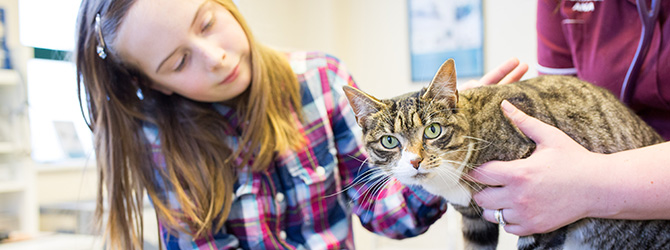Glaucoma in cats: how to spot it & what to do
First Published: 07/11/2019
Last Updated: 08/02/2023
Glaucoma is a painful condition that can result in the loss of site in one or both eyes. It affects humans and dogs as well as our feline friends.
Let’s take a closer look at what Glaucoma is, the symptoms to watch out for and what to do if you think your cat may be affected.
What is Glaucoma?
Glaucoma occurs when the cat’s eye is no longer able to drain fluid effectively. Usually, the fluid is produced and drained at a balanced rate, but if the eye isn’t able to drain it properly, the excess fluid causes a build-up of pressure on the surface of the eye. This condition is incredibly painful, and in extreme cases can lead to loss of site.
Glaucoma is far rarer in cats than in dogs, and often occurs as a result of other pre-existing eye problems.
What causes it?
Primary Glaucoma – Glaucoma that occurs of its own accord – is very rare in cats. Felines are more likely to suffer from Secondary Glaucoma, which usually follows on from other primary eye injuries/illnesses such as Conjunctivitis.
Common causes can include:
- Lens luxation (where the lens slips in the eye)
- Inflammation of the surrounding tissue
- Tumours
- A gathering of blood in one section of the eye (usually following an injury)

Symptoms of Glaucoma in cats
- Bulging or swollen eye(s)
- Cloudy or bloodshot eyes
- Frequent blinking
- Pressing their head against surfaces (attempting to relieve headaches)
- Loss of appetite
- General lethargy or irritability
- Avoiding sunlight
- Sleeping more than usual
Glaucoma is a fast-acting illness, so if you spot any of the symptoms listed above, treat it as an emergency and contact your vet as soon as you can.
Treatment
When you bring your cat into the surgery, your vet will perform a complete examination and diagnose the condition. Their chosen course of treatment will depend on what they take to be the cause of Glaucoma. In certain cases, your vet may refer you to an ophthalmology clinic for further tests.
Generally, treatment takes the form of eye drops or tablets – designed to relieve the excess pressure on the eye. In more severe cases, your cat may need surgery and in those cases where the condition is very far along, the affected eye may need to be removed.
Can you prevent Glaucoma in cats?
Not as such, but it’s important to recognise that eye injuries or illness such as Conjunctivitis can lead to Glaucoma. Be seeking the appropriate treatment for any problems your cat has with their eyes, you’ll be doing your utmost to prevent these problems from leading to Glaucoma.
As part of your cat’s grooming routine, aim to check their eyes regularly. If something doesn’t look right or if they appear to be in pain in any way, get in touch with your local vet.
Need more info?
If you have more questions about Glaucoma in cats, have a chat with your local vet today.
Find your nearest vet using our Find a Vet page, or speak to a vet online using Online Vets.


